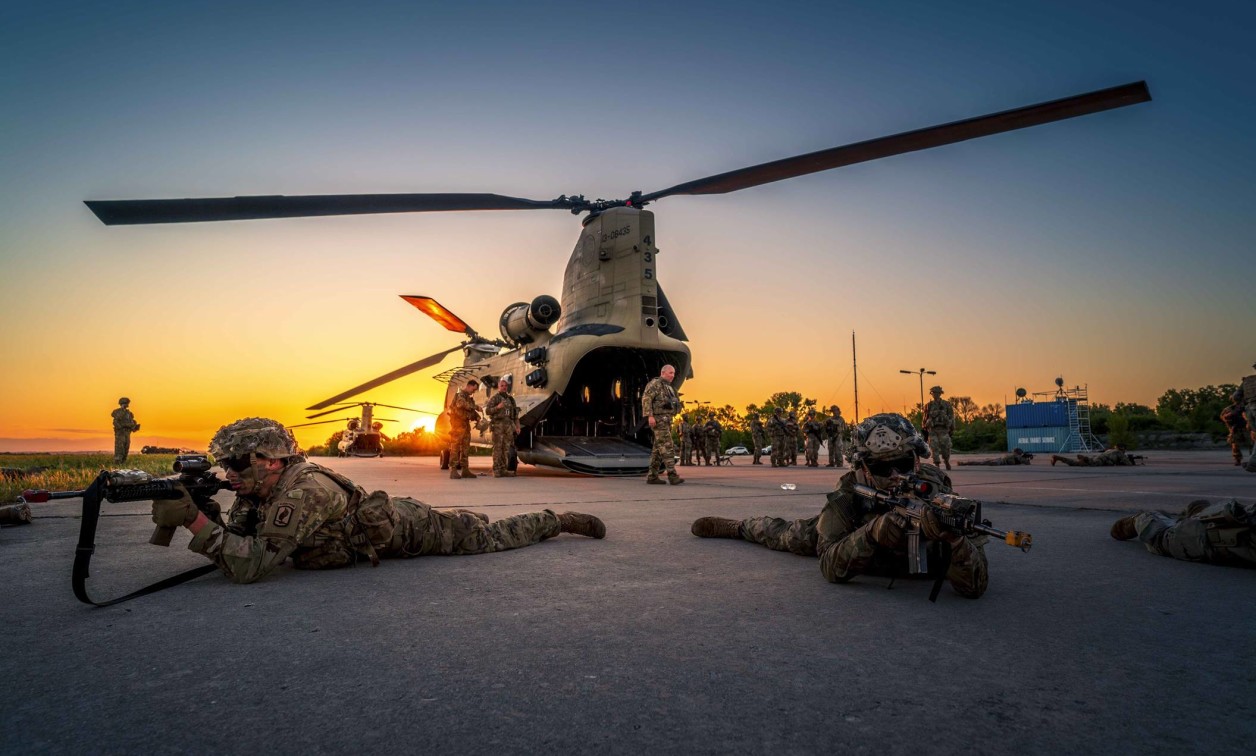Army TITAN team from Raytheon leverages MOSA expertise
NewsJune 30, 2021

DULLES, Virginia. Modular Open Systems Approach (MOSA) expertise is a key characteristic of the team Raytheon Technologies is putting together to support development of the U.S. Army’s Tactical Intelligence Targeting Access Node (TITAN) program. TITAN is a tactical ground station that finds and tracks threats to support long-range precision targeting.
The Raytheon team is competing against a team led by Palantir Technologies (www.palantir.com) for Phase 1 of the Titan program’s ground system modernization, which will be a 12-month period. Phase 2 of the TITAN award is expected in January 2022, according to Raytheon.
TITAN is part of the first phase of the Army’s Ground Station modernization program. The Army Program Executive Officer Intelligence Electronic Warfare & Sensors (PEO IEW&S) chose Raytheon and Palantir to deliver a prototype as part of this phase with a contract value of $8.5 million.
“Long-range precision targeting requires the utmost accuracy delivered in real time,” says David Appel, vice president for C2 Digital Solutions at Raytheon Intelligence & Space, a Raytheon Technologies business (www.raytheonintelligenceandspace.com). “Having the right technology is essential, but having the mission know-how to integrate, deploy and manage a system over time efficiently and cost effectively is entirely different.”
Modular open systems architectures are critical to the program. “TITAN will be built in an open, modular, scalable configuration, tailorable to the user mission requirements operating at Brigade, Division and Corps echelons and will include a [MOSA] design, which allows each configuration to be scalable as well,” said Lt. Col Matthew Paul, Product Manager responsible for TITAN, said, in January during a TITAN Industry Day, according to a news release from Program Executive Officer Intelligence Electronic Warfare & Sensors (PEO IEW&S).
For the Raytheon team, open architecture know-how will be delivered by Curtiss-Wright Defense Solutions (www.curtisswrightds.com) through their solutions based on SAVE (Standard A-kit Vehicle Envelope) and CMOSS (C5ISR/EW Modular Open Suite of Standards), as well as standards aligned to The Open Group Sensor Open Systems Architecture (SOSA). This proven foundation of compute, network, and network infrastructure management solutions will deliver an accelerated path to TITAN’s ground station modernization. This will yield deployable hardware at the brigade level and above, according to a Curtiss-Wright release.
“Sharing data across battlefields is a big part of MOSA requirements - as is reducing vendor lock-in - for any new acquisition,” says Jason DeChiaro, system architect at Curtiss-Wright. "The TITAN program demonstrates the U.S. military’s acknowledgement of MOSA benefits, and the Raytheon solution realizes these benefits by providing ease of upgrades and tech insertion, reducing overall lifecycle costs."
“The Raytheon solution is an open, modular, and scalable solution that modernizes SATCOM and terrestrial based communications and seamlessly fuses data to accelerate the sensor-to-shooter interoperability by providing relevant targeting data in near real-time, he adds.”
TITAN will leverage data from space and high-altitude, aerial and terrestrial sensors to deliver targetable data to defense systems. Multi-source intelligence support will be provided as well to targeting, and situational awareness and understanding for commanders.
In addition Curtiss-Wright and Raytheon Intelligence & Space’s space domain knowledge, the company will apply to TITAN its 3D point-cloud technology, which provides real-time targeting quality accuracy for every pixel in an image within seconds.
Other team members and contributions include:
- Algorithmia (www.algorithmia.com) and C3.ai (www.c3.ai) will enable the team’s solution to deliver easily digestible data to operators.
- Collins Aerospace (www.collinsaerospace.com) will provide MOSA-compliant communications solutions to enable TITAN mission effectiveness.
- Esri (www.esri.com), a provider of location intelligence technology, brings geographic information system software to TITAN, providing an easy-to-use and visually understandable system for operators.
- General Dynamics Mission Systems (www.gdmissionsystems.com) is the current vehicle integrator will provide essential vehicle experience and the vehicle manufacturing technologies.
- L3Harris Technologies (www.l3harris.com) will provide communications systems, network architecture for ground ISR communications, and updated secure datalink equipment in an open system architecture for the Army’s TITAN program.














